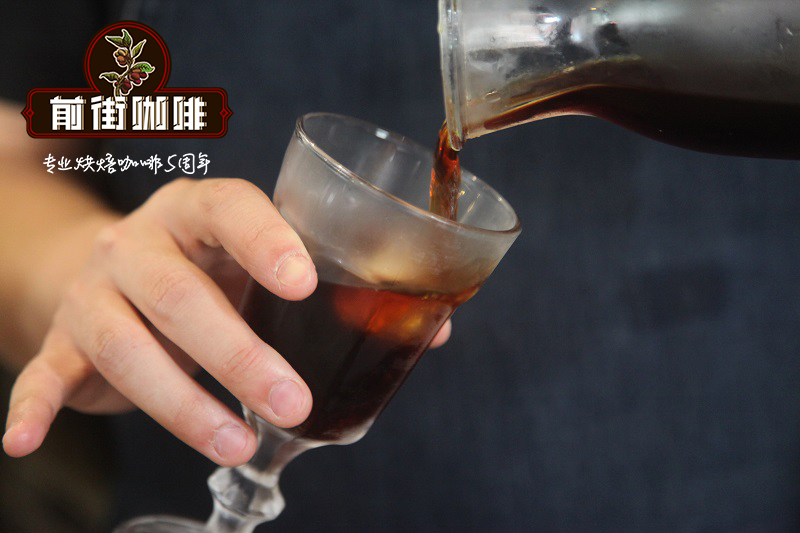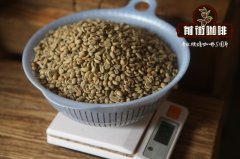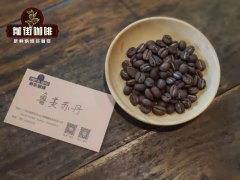The Ethiopian single producer plan introduces how the Sidamo production area is divided into sub-production areas.

Coffee in Ethiopia usually follows one of two paths: real estate coffee or collective land. Easier to understand (but harder to encounter) is the production path of estate coffee grown and sold under the name of the estate. The supply chain for Ethiopian estate coffee is largely similar to that in Central America, as farms are owned by wealthy Ethiopian nationals or Ethiopian nationals in partnership with international investors. Like any farm in Central or South America, these farms employ pickers and processors at market prices.
A second way to collect Ethiopian coffee is through formal or informal cooperatives. In some cases, these are formed by formal cooperatives in which members share ownership and decision-making power over enterprises. In other cases, washing stations, usually owned by exporters, act as informal cooperatives where small farmers can sell cherries. This is the most traditional and common case of Ethiopian coffee, and the coffee produced ranges from high-end first-class (G1) coffee to UG (ungraded) batches for in-house use. Coffee from washing stations or cooperatives can then flow directly to exporters or be sold on the Ethiopian Commodity Exchange (ECX) to any registered buyer.
These controlled processing and tracking conditions make it range from extremely difficult to completely impossible to even obtain and import microbatches or coffee from typical Ethiopian growers, who produce only 2 - 50 bags per year. Over the years, various exporters, importers and roasters have tried to find a solution to the system, for example, trying to float micro batches through ECX to the right end player without being bought by others. The necessity of working in and around the system results in situations where there is little direct negotiation or communication between growers and roasters. The lack of direct market access for farmers has led to inconsistent feedback on coffee quality and price discovery between Ethiopian farmers and roasters worldwide.

This year, however, ECX changed some of its rules to make it easier to export and track small volume transactions. ECX has opened new remote trading centres in cities such as Hawassa, which are closer to production areas such as Yirgacheffe. They also opened up the minimum number of bags that could be bought and sold on the exchange, officially allowing traceable microbatches from washing stations (not just self-sufficient estates) from small to one-bag.
With these changes in mind, Ally Coffee partnered with our good friends and exporters at Tracon Trading in Addis Ababa to purchase coffee at its four washing stations located in Yargacheffe through a new mini-batch program: Chelelektu, Biloya, Hafursa Waro and Chelchele. In the first year of the programme, 50 small-scale farmers sold their entire produce at a high price. Their coffee is then processed into washed or natural coffee, which is then tracked through fermentation tanks and/or drying stations. This first-of-its-kind procedure allows us to collect all the data from the exact height of coffee growth to specific fermentation and drying timelines. In addition, it allows Ally to pay extra premiums directly to farmers in the program, which is much higher than the price of cherries paid to farmers when donating to the community.
Obviously, the process is only beginning in a country and continent represented by turbidity and confusion, but being able to purchase coffee directly from smallholders in Ethiopia, the coffee's home country, is every coffee buyer's dream. Working with our partners in Tracon and finding unique and delicious coffee in the highly respected Yirgacheffe region is an honor and privilege. We look forward to expanding small-scale sourcing in Ethiopia and tasting fine coffee that was drawn to their own heritage and future by the attention of a farmer.
Important Notice :
前街咖啡 FrontStreet Coffee has moved to new addredd:
FrontStreet Coffee Address: 315,Donghua East Road,GuangZhou
Tel:020 38364473
- Prev

Harvest time and processing of coffee beans in Brazil how to judge whether coffee beans are new or old
There are many ways to grow, harvest and process coffee in different producing countries around the world. In the Cerrado Mineiro region of Brazil, where Ally Core Coffee Paubrasil comes from, coffee is harvested either manually or mechanically, and most of the coffee is natural. Coffee harvesting coffee beans are the seeds of a fruit called cherry, which grow on tall leafy trees.
- Next

What kind of coffee is the Sultan of Lumi? Flavor characteristics of Lumei Sultan Coffee beans in Qiancafe Manor
Professional coffee knowledge exchange more coffee bean information please follow the coffee workshop (Wechat official account cafe_style) Sudan Rume is generally translated as Lumi Sudan or Sudan Lumi. Is a very rare breed of coffee. It made its debut in a world-class competition and became famous for a while. It is not as famous as Rosa Coffee, but it is not as famous as Rosa Coffee.
Related
- Detailed explanation of Jadeite planting Land in Panamanian Jadeite Manor introduction to the grading system of Jadeite competitive bidding, Red bid, Green bid and Rose Summer
- Story of Coffee planting in Brenka region of Costa Rica Stonehenge Manor anaerobic heavy honey treatment of flavor mouth
- What's on the barrel of Blue Mountain Coffee beans?
- Can American coffee also pull flowers? How to use hot American style to pull out a good-looking pattern?
- Can you make a cold extract with coffee beans? What is the right proportion for cold-extracted coffee formula?
- Indonesian PWN Gold Mandrine Coffee Origin Features Flavor How to Chong? Mandolin coffee is American.
- A brief introduction to the flavor characteristics of Brazilian yellow bourbon coffee beans
- What is the effect of different water quality on the flavor of cold-extracted coffee? What kind of water is best for brewing coffee?
- Why do you think of Rose Summer whenever you mention Panamanian coffee?
- Introduction to the characteristics of authentic blue mountain coffee bean producing areas? What is the CIB Coffee Authority in Jamaica?

